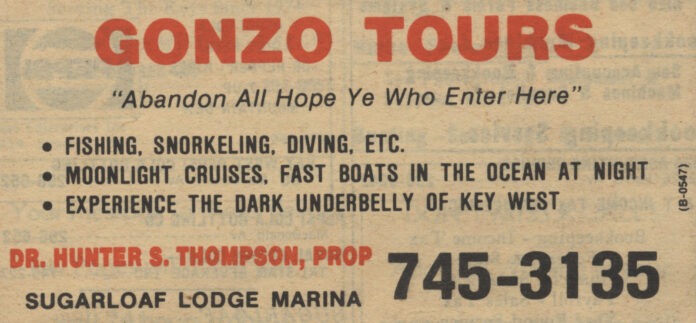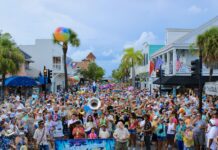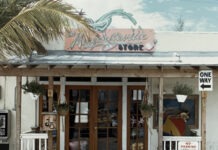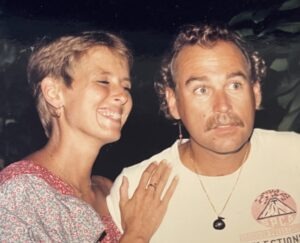
The Merriam-Webster Dictionary defines the word sugarloaf as “refined sugar molded into a cone.” It can also mean something cone-shaped.
Why the name was given to Sugarloaf Key is tricky to pin down. Some say it was named for crops of sugarloaf pineapples said to have once been farmed on the island.
The sugarloaf is one of about 40 varieties of the sweet, pulpy fruit. One of the sweetest varieties, it bears a white fruit that is low in acid and less fibrous than other pineapples. However, the Sugarloaf name predates the history of pineapple farming in the Keys. Other stories suggest the name was chosen because a cone-shaped Indian mound once existed on the island’s east side, north of the Overseas Highway.
As it turns out, Sugarloaf is not an uncommon name. Worldwide, more than 400 rocks, mountains and other cone-shaped formations bear the name. When driving along the highway, it can seem like there are two Sugarloaf Keys — especially because the road travels over another island while rolling between its parts — but the weirdly shaped island kind of looks like a backward E.
The highway crosses Sugarloaf Key twice, at Upper Sugarloaf and Lower Sugarloaf. Both jut out like the top and bottom arms of the backward E. Upper Sugarloaf Sound and Lower Sugarloaf Sound fill the open spaces. An interesting tidbit of local history is presented shortly after rolling past the green and white Upper Sugarloaf road sign. It appears near Mangrove Mama’s.
What is cool about the restaurant’s location is that it marks a junction linking both railroad and highway history — it houses a bit of it, too. Back when both the train and the highway were operating, the train huffed and puffed up and down the island chain, roaring along the same right-of-way that the highway travels today.
When the first version of the Overseas Highway opened in 1927, it followed a much different path. Officially called State Road 4A, it traveled along the Sugarloaf shoreline, the spine of the backward E, before crossing a wooden bridge to the Saddlebunch Keys. Should you turn left (toward the oceanside) at Mangrove Mama’s you can still travel along State Road 4A. Unlike the old days, the road doesn’t go as far as it used to. It travels past the Sugarloaf K.O.A. Resort and a little bit beyond before it abruptly ends. However, it picks back up again at Lower Sugarloaf, at the end of Sugarloaf Boulevard.
In those days, too, the road crossed the railroad tracks and passed through what is now the parking lot at Mangrove Mama’s. From there, it went to an old wooden highway bridge that linked Sugarloaf to Cudjoe Key. Also, at least one building on the property of Mangrove Mama’s is said to date back to the railroad years. The former railroad building has been part of a restaurant for a long time. In the 1950s, it was Eddie’s Fish Basket, which is why the fried fish basket on the Mangrove Mama’s menu is called Eddie’s Fish Basket.
After rolling past Mangrove Mama’s and over Upper Sugarloaf, the highway crosses Park Channel and Park Key. Park Key was not built from railroad fill but is a small, slender island that naturally developed in the Upper Sugarloaf Sound. From there, the highway crosses passes and bridges called Harris. While Dr. J. Vinning Harris is usually associated with Key West, he is an important part of Sugarloaf Key’s history, too.
Harris graduated from the University of Mississippi’s medical school in 1859. He was a Confederate Army and Navy assistant surgeon during the Civil War. After the war, Dr. Harris moved to Key West, where he engaged the community well beyond his medical practice. Harris served as a customs collector and as the Monroe County school superintendent. The former J. Vinning Harris School was named in his honor.
At one point, he owned most of Sugarloaf Key — all of it, really, except for what has been described as its southern shore. He built a large house on the island, and in 1897, the doctor began experimenting with sponge farming in the warm, shallow waters surrounding the island. His property would change hands a couple of times, though the one constant was the continuation of an effort to farm sponges which, eventually, became a failed experiment. It did not fail because it could not be done — though sponge thieves were always a problem — but because of a collapse of financial support.
The sponge headquarters were found in the area of MM 17 on Lower Sugarloaf. Today, a fire station and the Sugarloaf Lodge are there. Oh, if the walls at the Sugarloaf Lodge could talk. One of its most colorful guests was Hunter S. Thompson, who stayed at the lodge in the 1970s and 1980s.
Thompson is best remembered for his “gonzo” style of journalism that incorporated first-person narratives and the use of writing more commonly associated with fiction than journalism.
He is also remembered for his love of drugs, drinking, guns and his 1972 novel “Fear and Loathing in Las Vegas.” Johnny Depp played the central character based on Thompson in the 1998 movie.
The following advertisement appeared in Key West’s 1983-84 Yellow Pages: “Gonzo Tours, Abandon All Hope Ye Who Shall Enter Here. Fishing, Snorkeling, Diving, Etc. Moonlight Cruises, Fast Boats in the Ocean at Night, Experience the Dark Underbelly of Key West. Dr. Hunter S. Thompson, Prop., Sugarloaf Lodge Marina.” That would have been one wild adventure.
At MM 17, there is also a small airport where you can experience the Florida Keys in a totally different way; it’s home to Sky Dive Key West. Take a right (toward the gulfside) on Bat Tower Road where, for nearly 100 years, the Perky Bat Tower stood. It was one of the great roadside attractions before Hurricane Irma blew it down in 2017.
There is more to say about Sugarloaf Key and the conversation will continue when the Great Florida Keys Road Trip travels over Harris Channel and into the Saddlebunch Keys. There, we’ll take a quick stop at Baby’s Coffee before exploring all the red mangroves.

















